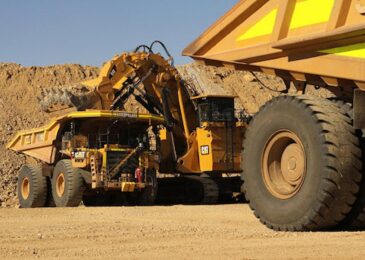We all miss the days when disaster prep was only for Bear Grylls but we’ve learned that the unexpected can happen to anyone, at any time. It’s practical to be prepared for unforeseeable emergencies, both at home and at your business.
Planning is the key to making sure that your business stays functional and safe during whatever disaster you face. If you don’t know how to make emergency plans for your business, keep reading. This guide will explain the crucial points to developing your emergency plan and keeping your business running in a disaster.
Assess Your Business’s Risk
The first step to being prepared is knowing what you’re preparing for.
Depending on your location, your business may be at risk for natural disasters or social dangers, such as:
- Extended closure due to COVID-19
- Floods
- Snow or ice storms
- Fire
- Earthquakes
- Civil or political unrest
Think about your business’s location. What are the natural and political disasters that are likely to happen in your area? If you have more than one location, you’ll have to assess the risks separately for each storefront.
Now that you’ve thought about the disasters that could happen to your business, you’ll need to consider how they could affect you. Walk around your premises and imagine the disaster occurring in your location. How exactly would it affect your business?
Is your business at risk for:
- Damage to your inventory (water damage from flooding, breakage from earthquakes)
- Break-ins (unprotected windows or doors)
- Getting snowed in (narrow doorways, no emergency exit)
- COVID-19 closures (crowded premises, insufficient space for distancing)
You can mitigate some of these risks ahead of time. For instance, if your business is in a location where flooding is likely, move your valuable inventory out of the basement and store it on higher ground. You can invest in security gates to protect large windows, and you should have basic safety protocols (such as fire extinguishers) already in place.
Next, Build Your Emergency Plans
Urban legend holds that major retail businesses hold a meeting after every emergency that makes the news. In this meeting, they brainstorm: what would we have done if that emergency happened to one of our locations?
Being prepared for an emergency depends on this kind of mental exercise. After you’ve identified your major risks, you’ll want to figure out what you’d do if the worse should happen. This means building a disaster plan.
In an emergency, your business has two goals:
- To stay open and running as long as possible
- To stay safe from dangers, including natural and human dangers
Build your disaster plan around these two goals. Below, we’ll go through a few common considerations for each one.
- How Do I Keep My Business Open?
In an emergency, you want your business to stay open as long as possible. That means being ready to respond to any situation.
Keep preparedness basics on hand, including:
- A power generator
- Snow shovel
- Fire extinguisher
- First aid kit
- An up-to-date first aid manual
- Battery-powered flashlight with fresh batteries
- An unopened box of batteries
- Storage-safe food and water (enough for 72 hours)
- COVID masks
- Rescue blanket
These supplies are designed to carry you through 72 hours, as the Red Cross recommends. With standard emergency supplies, you should be able to keep your business open and running during an emergency.
- How Do I Protect My Business?
Your other goal is to protect your business from any harm that might come to it.
This includes the direct effects of natural disasters, but we also know that emergencies cause panic, and panic leads to social chaos. All too often, storefront businesses are the first casualties of an emergency when people get scared. You need to be ready to protect your business from looting.
Your protection plan may include:
- A generator to keep your alarm system functioning
- An emergency button to call the police, with fresh batteries
- Attack deterrents (if legal in your area) such as pepper spray
- An emergency exit plan
Fuel Up Your Generator
Your generator is the cornerstone of your business disaster plan, and the peace of mind that comes from knowing you have reliable backup power is great.
What’s not so great? Discovering that your backup power generator is malfunctioning. Especially if you discover it after the whole city has gone dark.
Most people don’t know that fuel degrades over time. If it’s too old, fuel will lose its combustibility and your generator won’t run when you need it to. If you fuelled up your generator years ago and haven’t touched it since, it’s probably time to test run and refill it.
But never fear. If you find yourself in an emergency situation and your generator refuses to work, an emergency fuel delivery is only a phone call away.
Invest in a Portable Safe
Most businesses have a permanent safe to store their valuables, and that works well when your security cameras are functioning, the police are nearby, and all’s right with the world.
But in an emergency, a portable safe allows you to pick up your valuables and bring them to a safe location.
Unfortunately, 2020 taught us that the widespread panic of an emergency is the perfect cover for opportunistic looters to blow up ATMs and safes. If looters break into your business and see a standing safe, it may be an invitation to blow it up to get at the cash inside.
If an emergency forces you to close your business’s doors, it’s wise to leave your permanent safe open. That allows looters to see that there’s nothing inside to steal, which could spare your store the damage of explosives. Meanwhile, with a portable safe, you’ll be able to take your valuables with you to a safe location.
Your Emergency Plans, Solved
When the unexpected happens, preparedness is everything. With these tips, you’ll be able to develop emergency plans that are tailored to your business and your area and carry them out with confidence.
Were these tips helpful? Then check out the rest of our blog for more safety, health, and lifestyle insights.




